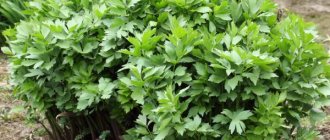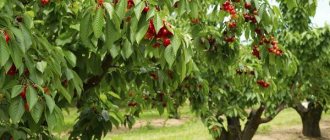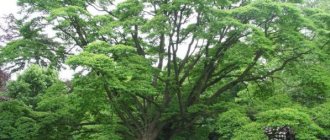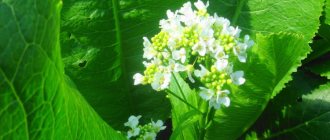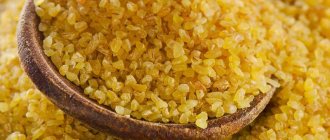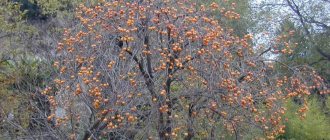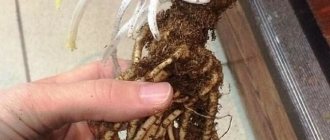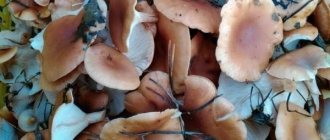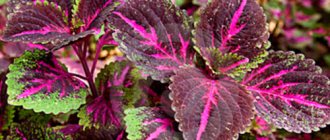Ambrosia plant photo close up which is presented below is known as a weed and also as a species that causes allergies for some people. On their plots, gardeners and gardeners strive to immediately cut down the dense growth of this weed.
Many perceive this species as a source of harm that must be destroyed as early as possible. Orders for its widespread destruction are issued by the administrations of many towns and cities.
However, it should be remembered that this plant is actively used in folk medicine and homeopathy, since its composition is rich in useful substances and elements.
Our article provides detailed information and description of ragweed, as well as its beneficial properties and harm .
Description of the plant and species
Ambrosia wormwood begins to show its insidiousness even at the age of seedlings. Very young plants with fresh green leaves look like marigolds, so gardeners whose plots this weed has invaded do not weed it out. At the next stage of life, the bush acquires a resemblance to Chernobyl wormwood. And only at the moment of flowering the plant “sheds its masks,” but it is too late: the pollen floated through the air, providing new generations of invaders.
Ambrosia is an annual plant with a small leaf surface area and hard pubescence, capable of growing up to 2.5 meters in height. The grass belongs to the Astrov family and blooms in compact baskets, collected in tall spike-shaped inflorescences - “candles”.
Flowers open from July to October, the first fruits ripen in August. The number of seeds from one specimen easily reaches 100 thousand. They have extraordinary vitality and are able to germinate 40 years after formation.
The genus Ambrosia includes 51 species, of which three are found on the territory of Russia and neighboring countries:
- ragweed wormwood - with openwork, strongly dissected leaves;
- ambrosia tripartite - with wider lobed leaves;
- perennial ragweed - in addition to seeds, it reproduces by root suckers.
Ambrosia tripartite
Types of ragweed
There are about 50 varieties of ragweed registered in the world. Three of them are common in the territory of the former Soviet Union.
Ambrosia artemisiifolia
The most common species of the genus Ambrosia, a herbaceous annual up to 2 m tall. The stems of the weed ragwort are straight, covered with bristly hairs, and paniculate-branched at the top. The leaves of the weed are pinnately dissected or twice pinnately dissected, and are very similar in appearance to wormwood - hence the name.
Flower baskets with staminate flowers are located on drooping stalks. The weed seeds are in a dense, wrinkled, matte wrapper of greenish-brown color and 4-6 short spines. The weed Ambrosia wormwood reproduces only by seeds.
Ambrosia trifida
Spring annual weed. On a straight, slightly branched, grooved stem there are opposite 3-5-separated leaves with lanceolate serrated lobes. Racemose inflorescences form in the upper part of the weed stem. The fruits are achenes in a strong wrapper.
One plant produces up to 5000 seeds. Unlike other species of Ambrosia, freshly ripened seeds of the weed Ambrosia tripartite do not germinate; they remain in a state of biological dormancy for 4-6 years. The plant is common in lowlands, gullies, ravines, and on river banks.
Attention! The weed prefers soddy-podzolic soils, light loams, sandstones and chernozems.
Ambrosia psilostachyia (Ambrosia psilostachyia)
A perennial plant with a well-developed root system, consisting of a main tap root and numerous shoots. Along the entire length of the creeping root, the weed lays vegetative buds, giving rise to new shoots.
The stem is straight, branched, grooved, up to 1.5 m high. The leaves of the weed are deeply divided or pinnately dissected, 5-12 cm long, with a solid edge, located on short petioles. The entire plant is densely covered with short, hard fibers, giving it a greenish-gray tint. The flower baskets of the weed are collected in dense spike-shaped inflorescences 7-15 cm long. The fruit of ragweed is an achene in a greenish-brown or dark gray wrapper. The wrapper is woody, with faint spines. The weed reproduces by seeds and root shoots, which easily take root, grow quickly and form dense dense thickets.
Chemical composition
The aerial parts of the plant contain sesquiterpene compounds, which are growth regulators for plants and odor stabilizers for perfumers. Ambrosia grass accumulates up to 0.14% essential oils, methyl chavicol, as well as various alcohols: geraniol, borneol, camphor. The seeds carry up to 18% fatty oils in their storage tissues.
By far the most important chemical compound in the plant is ambrosic acid, found in the pollen. It is this substance, in combination with special antigen proteins, that causes a severe allergic reaction in a person, up to and including anaphylactic shock. On the other hand, pollen contains the compound psilostaquin, which suppresses the development of cancer cells.
An important chemical compound of the plant is ambrosic acid, contained in pollen.
Why is ragweed dangerous?
Plant pollen is an aggressive allergen. Blooming ragweed causes headaches, not only in allergy sufferers, but also in healthy people. The danger is that after some time a person may develop an acquired allergy.
In addition, the possibility of self-seeding crops today is the cause of many environmental problems. Fertile soils suffer from the weed; a long period of germination requires farmers to completely disinfect the soil. The root system of the plant is so powerful that it sucks out all the beneficial substances from the soil. Therefore, in addition to disinfection, it is necessary to restore the nutrient layer for growing useful crops.
When does sakura bloom in 2021: in Japan, Moscow and St. Petersburg
Distribution and habitats
Artemisia ragweed is a native of the steppes of North America, where its reproduction is limited by natural factors: insect pests, some herbivorous ungulates and the harsh climate of Canada and Mexico.
During the era of the development of America, fragrant grass was brought to Europe and immediately spread widely. Fortunately, this is a rather heat-loving species, and one cannot expect its naturalization north of 50 degrees latitude, especially in Siberia. Ambrosia firmly occupied the Mediterranean, central Europe, southern Ukraine, the Volga region and Transcarpathia, and penetrated Africa, Argentina, Australia and China. Throughout its range, it prefers cultivated fertile lands of open steppe spaces and is found along roads and railway embankments.
Ambrosia artemifolia
Perennial ragweed
05/02/2019 Ambrosia ( lat. Ambrósia
) belongs to the genus of annual or perennial herbs of the Asteraceae family. In total, scientists count about 50 varieties of this plant, most of which originally grew in North America, and then gradually spread throughout the world.
Perennial ragweed, like many other species of this plant, is included in the list of dangerous quarantine objects.
Currently, this weed can be found in South America (Argentina, Chile, Uruguay, Bolivia, Paraguay, Peru), in the countries of the European continent (France, Poland, Holland, Sweden, Belgium, Hungary, Germany, Denmark, Spain), as well as in Australia and some Asian countries.
For Ukraine, three varieties of ragweed pose the greatest danger:
· Artemisia artemisifolia. This weed is widespread and is found almost throughout the country.
· Tripartite ragweed (Ambrosia trifida). Currently, this plant has not been found on the territory of Ukraine, but has a potential threat
· Perennial ragweed (Ambrosia psilostachya DC). The weed periodically appears in the form of separate local outbreaks
Maliciousness
Seeds of perennial ragweed germinate in field conditions when the soil warms up to +15°C, which usually occurs in the first half of May. Around the first half of July, the weed begins to actively form horizontal roots, including reproduction buds, which are the main source of weeding of arable land.
Ambrosia develops a powerful root system with a dense green above-ground mass, and draws nutrients and moisture from the soil.
In row crops and fallows, foci of weed infestation may appear immediately after precipitation, and during autumn plowing, individual roots are usually redistributed and move to the lower soil horizons.
Perennial ragweed is capable of budding along the entire length of the root system. Its rhizomes and root segments easily take root, grow quickly and soon form a dense clump of continuous thickets, thanks to which they can easily compete even with perennial grasses in pastures and meadows. But livestock do not eat this plant.
At the same time, like many other varieties of weed, perennial ragweed has exceptional plasticity and is capable of weeding and suppressing row crops (especially sunflower) and grain crops.
In addition, ambrosia, despite its beautiful name (from Greek mythology, this word is translated as food of the Gods), is a poisonous plant. During the flowering period, weed pollen can cause severe allergic reactions (hay fever) in people, causing attacks of bronchial asthma and inflaming the mucous membrane of the upper respiratory tract, which in some cases can even lead to death.
Spreading
Perennial ragweed is a root-sprouting plant, so it reproduces mainly using root shoots. The weed also spreads with the help of seed fruits, which, despite their small number, can easily penetrate the territory of new regions and other countries along with planting material, grains or soil.
In the natural environment, seeds are distributed by wind or along with water currents, and are also carried by animals and birds. In addition, the ripening of ragweed seeds usually coincides with the harvesting of grain crops, so they can be transported over long distances by attaching to vehicles, harvesting equipment, work equipment and tools, as well as along with hay or grain waste.
Description of the plant
Ambrosia psilostachya DC
is a perennial root shoot plant with a straight and branched stem that can reach one or more meters in height.
The leaves and stem of ragweed are covered with small, stiff hairs, giving the entire plant a grayish-greenish color.
The leaves reach from 5 to 12 centimeters in length, with the lower ones being opposite and the upper ones alternate, petiolate.
The female flowers of the plant are single, sparse, often located at the base of the male inflorescences or in the axils of the upper leaves. Men's baskets are dense, bell-shaped.
The ragweed fruit is an achenic fruit in an easily peelable wrapper.
The achene is glossy greenish-brown.
Weed control
Ambrosia is one of the most difficult plants to remove, therefore, to destroy its foci it is necessary to take a whole range of agrotechnical, mechanical and chemical measures both in cultivated and uncultivated areas (along roads and railways, along the edges of fields, in forest belts, and so on) .
The quarantine method of protection against ragweed is based on careful control of seed material, especially for plants with a late harvest period (buckwheat, alfalfa, Sudan grass).
In populated areas, when ambrosia is discovered, it is usually destroyed mechanically by manual digging along with the root system. Repeated mowing of weed foci is also practiced, which is carried out during the period of budding and flowering with the subsequent destruction of the mowed mass.
Systematic mowing of ragweed over several years leads to gradual depletion of root shoots, and the plant stops reproducing.
Agrotechnical methods of control
The following measures are used in the fields to counteract ragweed:
· Strict adherence to crop rotation rules. A heavily weeded field is usually fallowed and replanted twice with winter wheat.
· Cultivation and inter-row tillage, including along the border of infection foci
Chemical methods of control
Ambrosia demonstrates high sensitivity to herbicides of group 2,4 D (Esteron, Elant, Avrorex) and MCPA (Agritox, Lintaplant, Amethyl), and the drug Pivot has proven itself well on alfalfa and soybean crops.
On uncultivated lands, herbicides based on glyphosphates (Roundup, Gliper, Torch, Tornado, Ground, Hurricane) show a good effect.
As a new effective remedy against a dangerous weed, scientists proposed using the Stop Ambrosia biological product based on magnesium salts. It is based on a substance called bischofite and is mined in Ukraine.
As it turned out, bischofite has the ability to penetrate the internal tissues of plants, causing them to quickly wither. When treating ragweed at the beginning of its budding, the weed loses its ability to reproduce and no longer causes allergic reactions in people.
At the same time, the biological product is absolutely safe for people and animals, therefore it is approved for use to destroy ragweed in all populated areas.
Biological methods of control
Of the biological agents, the leaf beetle, which feeds on ragweed, has proven to be the most promising. The insect has demonstrated good adaptation to new living conditions and for this reason is purposefully imported from the United States to combat a dangerous weed.
Phytocenotic methods of control
On non-arable land, when it is over-infested, the soil is watered. As plants for grassing uncultivated areas, annual and perennial varieties of grasses are used that have long roots and thereby create dense turf (common wheatgrass, fescue, common grass, lawn and cereal grasses).
In any case, it should be remembered that effective control of perennial ragweed can only be achieved through joint efforts, including the work of various services, organizations and individuals.
Application
North American Indians used ambrosia decoction to treat diarrhea, various fevers, and the consequences of insect bites. In domestic folk medicine, fresh leaves are used in the form of compresses for the treatment of bruises, hematomas, radiculitis, and joint pain. An infusion of the herb is used for inflammatory diseases of the digestive system, helminthiasis, nervous disorders and convulsions.
Based on ragweed, tests are produced to identify the body's predisposition to hay fever, as well as to treat them using the desensitization method. The method involves gradually “accustoming” the immune system to small doses of antigens. Currently, medical research is being conducted to find use for the plant in oncological practice.
Prevention of allergies in children and adults
The best way to reduce the impact of an allergic reaction is to take all necessary measures in advance. Timely preparation will make life easier and reduce numerous inconveniences.
Preventive measures for allergies:
- An air purifier, humidifier or air conditioner can serve as reliable prevention. Even with the windows closed, there will be enough air and moisture in your home to keep your body comfortable.
- It is recommended to wear clothes made from natural fabrics, as synthetic materials can become an additional irritant and cause toothache and discomfort, especially during the hot season.
- Bed linen must be changed every 10-14 days. There is no need to set the wash to a high number of degrees; it is enough to set it to 30-40 degrees, just to freshen up the bedding.
The main thing to remember is that the difficult period of flowering and allergies does not last forever, ragweed is a seasonal grass and its flowering period will soon end. It is important to set yourself up for a positive outcome in any situation and deal with irritants exclusively using that method, and apply those recipes that are right for you.
Medicinal properties and harm
The chemical composition of the grass and pollen of ragweed determines its medicinal properties:
- bactericidal - the ability to fight infectious agents;
- cytotoxic – suppression of active activity and proliferation of cells, including cancer cells;
- antigonadotropic – participation in the treatment of tumors of the reproductive system.
In addition, plant preparations have an astringent and antipyretic, and, according to some information, a contraceptive effect. Due to the presence of the chemical compounds santonins, ragweed is one of the most effective herbal remedies for helminths, but its use is limited by serious allergic manifestations in most patients.
Ambrosia has an astringent, antipyretic and contraceptive effect.
The immune system and ragweed
The immune system's job is to find foreign substances such as viruses and bacteria and get rid of them. The immune response protects against disease. People with allergies have an immune system that reacts when they come into contact with allergens. If a person is allergic to ragweed pollen and inhales it from the air, then symptoms of rhinitis (hay fever) appear.
Seventeen species of ragweed and a large family of plants spread harmful pollen by wind. When different types of pollen enter the body, allergy symptoms worsen.
When ragweed blooms - what to do if you have allergies?
The pollen of this plant is one of the strongest allergens in the plant kingdom. For hay fever to appear, it is enough to inhale 4-5 pollen grains. Symptoms of an allergy to ragweed are typical: sneezing, soreness of the pharynx and larynx, swelling of the eyelids and profuse lacrimation - however, they develop very quickly and with triple force.
An allergic reaction such as asthma is very likely, which is accompanied by suffocation and a panic attack. Significant discomfort during the flowering period of the weed is a reason to immediately consult a doctor, who will select antihistamines or hormonal drugs, eye drops and specific immunotherapy suitable for a particular person.
Ambrosia pollen is one of the strongest allergens
How to deal with allergies
Allergies currently affect more than half of humanity, and the number of allergy sufferers is only increasing every year. Therefore, even healthy people need to know the manifestations of allergies.
Symptoms of the disease
When pollen gets on the skin or mucous membranes of adults susceptible to hay fever, the following symptoms of an allergy to ragweed appear:
- conjunctivitis, in which the eyes become red, itchy and watery;
- skin itching accompanied by redness;
- sore throat with a constant desire to cough and sneezing;
- allergic rhinitis with nasal discharge.
All this leads to the emergence of secondary factors of the disease. These include:
- causeless irritability;
- insomnia;
- frequent headaches;
- decreased concentration;
- depressed mental state.
In a person with an allergy to ragweed, the eyes are the first to be affected.
If a runny nose and cough appear, you should make sure that this is a manifestation of hay fever and not a cold.
Treatment methods
When these symptoms appear, take antihistamines - antiallergic drugs. The list of the most popular and effective medications contains the following medications:
- suprastin,
- Claritin,
- tavegil,
- zyrtec,
- Loratadine.
These drugs are available without a prescription, but it is better to consult with your doctor first so that he can select the most appropriate medicine and dose.
The best remedy for the annual painful manifestations of allergies is anti-reaction injections. As a result of therapy, the body gets used to the irritant and does not react so painfully when ragweed blooms. The method is based on regular injection of small doses of the allergen intravenously to the patient.
Treatment with folk remedies
In the question of how to treat allergies to ragweed, traditional medicine recipes will help. Decoctions and infusions of herbs do not have such a pronounced effect as when using medications, but they do not affect the liver and kidneys. If you have another outbreak of hay fever, try the following folk remedies:
- Celery and honey. Grind fresh leaves in a meat grinder, mix with honey, and leave overnight. Take three spoons every day.
- Nettle. Drink a little decoction of the leaves half an hour before meals. Contraindicated in thrombophlebitis.
- Pine needles. To five tablespoons of crushed needles add three tablespoons of rose hips. The mixture is poured with boiling water and kept on low heat for 10–12 minutes. If the mixture is brewed in a thermos, boiling is not necessary. The decoction is infused and drunk throughout the day.
All of the recipes listed above contain many vitamins and other beneficial substances. If they cannot alleviate suffering, they will definitely strengthen the body and increase immunity.
Allergy prevention
Even before symptoms of an allergy to ragweed appear, preventive measures should be taken. They will significantly reduce discomfort.
One of the effective preventive measures is a proper diet. During the summer, avoid the following foods:
- all sweets;
- watermelon, melon, peaches;
- sunflower seeds and oil from them;
- chamomile tea;
- pickles, smoked meats and marinades;
- any alcohol.
Some of the above products contain pollen from plants from the Asteraceae family. When using them, complications may develop, including anaphylactic shock.
When ragweed blooms, doctors advise all allergy sufferers to follow these simple rules:
- Keep windows and doors closed to prevent pollen from entering your home;
- Install a special pollen filter in the air conditioner;
- carry out wet cleaning of the room every day - you must thoroughly wipe off dust from all surfaces and wash the floor;
- take a warm shower before bed and wash your hair to prevent pollen from getting into your bed - this can lead to the development of hives;
- Always bathe your pets after walking them, as their fur carries a lot of pollen.
Preventing allergies to ragweed is one of the most effective measures to protect your health. To avoid dangerous consequences, consult a doctor if your condition worsens significantly.
Fighting the plant
Ambrosia wormwood and related species are recognized as dangerous quarantine weeds. This status is given to plants that easily take root in new places and behave more aggressively there than in their previous habitat.
The fight against the plant is carried out not only because of its exceptional allergenicity. Ambrosia actively infests fields, shielding crops from light and thereby suppressing their growth. The roots of the weed reach a length of 4 meters and, in conditions of insufficient moisture, quickly dry out the soil, easily competing even with such “pumps” as corn and sunflower. Once in the hay, the leaves of the plant change the taste of cow's milk for the worse.
There are three ways to kill weeds:
- chemical - using glyphosate-based herbicides (for example Roundup);
- mechanical - weeding with careful pulling out of roots;
- agrotechnical – periodic mowing before flowering, grassing of empty plots, crop rotation.
The catastrophic situation with ragweed infestation in the southern regions of the country forces scientists to use another – biological – method of destroying allergenic thickets. Its essence is to use insects that eat it to combat the green pest. The most promising is the zygogram leaf beetle, whose larvae feed on leaves, preventing the plant from gaining strength for flowering.
Ambrosia actively infests fields, suppressing cultivated crops
Ways to fight
If you do not fight this weed, it will very quickly take over everything in the area, displacing other crops. To do this, use all possible methods - mechanical, chemical and biological.
- Mechanical methods are the most effective, efficient and safe. They involve pulling out, digging up and mowing weeds with their obligatory destruction. All this must be done before the seeds appear, and many times during the season. Because, as already mentioned, seeds of any degree of maturity can germinate, even those that have lain in the ground for several years. In addition, they can be brought to the site by the wind, birds or with the seeds of other plants. Therefore, if you have noticed this plant at least once on your site, you will have to inspect the soil regularly.
Mowing before flowering is the most effective way to control
It is recommended to contact the plant using protective equipment
It makes sense to pull out and dig up a weed only if it grows locally or individually
Carefully examine purchased seeds to see if they contain ragweed seeds.
- Chemical methods based on treating weeds with herbicides are not always acceptable. They cannot be used in resort areas, on pastures, or in populated areas, especially if ragweed colonies occupy a large area. But in private areas with spot infestation, this method works better than others.
Chemical control methods are unsafe for people and animals
- Biological methods involve the use of ragweed's natural enemies, which include both other plants and insects. In the homeland where they grow, ambrosia has several hundred such enemies. In our country, lawn grasses, fescue, alfalfa, and other perennial legumes and cereals help fight it. They are able to completely displace ragweed in three years. It's more difficult with insects. There have been attempts to use the ragweed leaf beetle, but it does not disdain the shoots of other plants.
The ambrosia leaf beetle looks similar to the Colorado potato beetle
Collection, preparation, storage and recipes
The medicinal raw materials of ragweed are grass and separately pollen, harvested at the beginning of flowering. The inflorescences are cut by hand with a sharp knife and laid out on paper. After a few days, the inflorescences are removed, and the fallen pollen is poured into glass containers. The grass is dried in the shade under a canopy or in a dryer at a temperature not exceeding 50 degrees. Considering the allergenicity of the raw material, they work with it in a respirator.
To prepare ambrosia infusion, take 2 tbsp. spoons of dry herb, pour a glass of boiling water, leave for half an hour and filter. Take 2 tbsp. spoons 3-6 times a day for diseases of the digestive system and for the prevention of malignant tumors.
A tincture to combat neurasthenia is prepared from fresh or dried flowers, as well as pollen, in high-quality vodka in a ratio of 1:5. Infuse for a week in a dark cupboard, take strained 2-3 times a day, 8-10 drops.
The medicinal raw materials of ragweed are grass and pollen, which are harvested at the beginning of flowering
Ambrosia is an unwelcome guest in gardens, fields and vegetable gardens, since it can kill any grains and vegetables with thirst and strike the owners themselves with severe allergies. But if this plant is grown under strict control, it can achieve amazing success in the treatment of hay fever itself, and even cancer.
Description and features
ragweed leaves
Ragweed is identified by its leaves. This plant produces a basal rosette of leaves in the early stages of growth. Common ragweed has fern-like leaves, while giant specimens have distinctive, large leaves with three or five petals. Giant leaves are from 20 to 30 cm long. The upper leaves of the plant are spear-shaped and up to 15 cm long. The lower leaves are ovate or diamond-shaped.
The leaves are arranged oppositely at the base of the plant, but further up the stems they are arranged alternately. The leaf blades (1-16 cm long and 1-7 cm wide) are deeply divided (pinnately dissected) and look like a fern. They grow on leafy stems (petioles) about 1-3 cm (sometimes up to 10 cm) long. The uppermost leaves are usually much smaller and less divided than the lower ones. All leaves are covered with hairs (hairy), especially on their undersides, and these hairs can be long or short and soft.
Flowers
Pay attention to the shape of the flowers. Common ragweed has thin, 3 to 4 cm cylindrical flower spikes that contain tiny green flowers. The flower spikes of giant ragweed are green, 7 to 15 cm long. They are formed mainly on the upper stems. The stiff flower spikes look like bottle brushes. Each stem bears densely growing small green flowers.
Separate male and female flower heads are produced on different parts of the same plant (that is, the species is monoecious). The male (staminate) flower heads outnumber the female (pistillate) flower heads and hang from branched, bell-shaped flower clusters (up to 20 cm long) at the tips of the stems.
The male flower heads are small, hemispherical in shape and cream, yellowish or pale green in color. The female flower heads are less noticeable and consist of a single tiny flower.
The base of the flower heads (the involucre of the inflorescence) is saucer-shaped with 5-7 small bristle-like spines (each 3-5 mm long). The female flower heads grow vertically and are held singly in the forks (axils) of the upper leaves (that is, above the male flower heads).
Flowering occurs mainly in summer, autumn and early winter.
Ambrosia stem
Ambrosia before flowering
The highly branched, straight (upward growing) stems are rounded in cross section (cylindrical) and have a reddish or brownish-green color. The stems of different types of ragweed range from almost smooth to coarsely hairy.
Ambrosia seeds
The fruit is a small brown or blackish seed (2-5 mm long) shell-shaped. The seeds harden as they mature and have a pointed end (1-2 mm long) and a ring of four to eight small, blunt spines (each less than 1 mm long).
